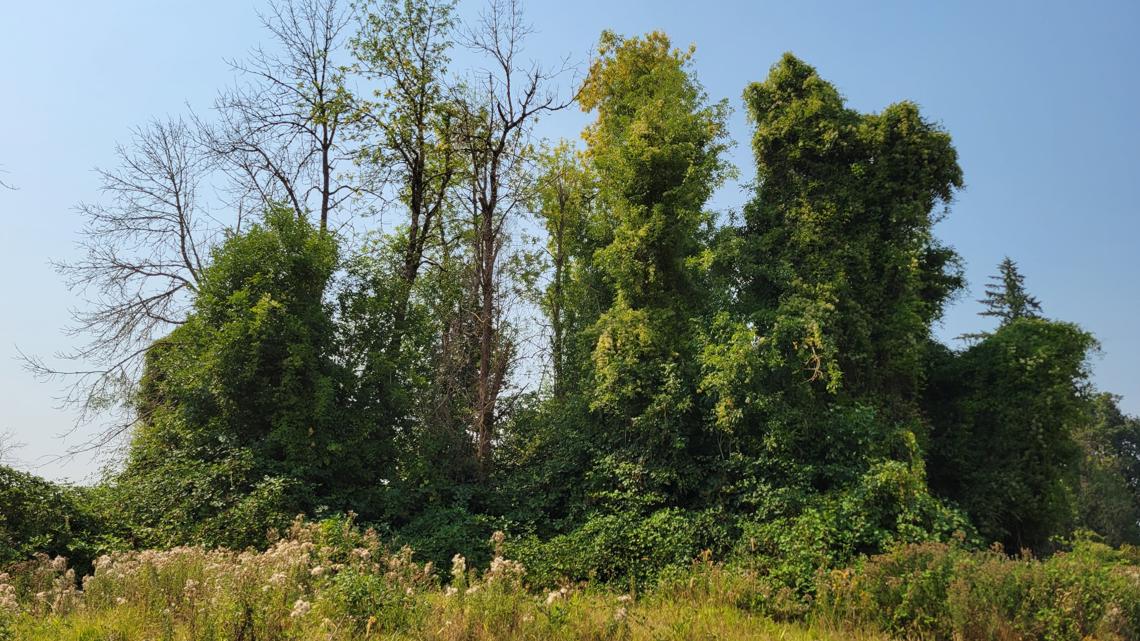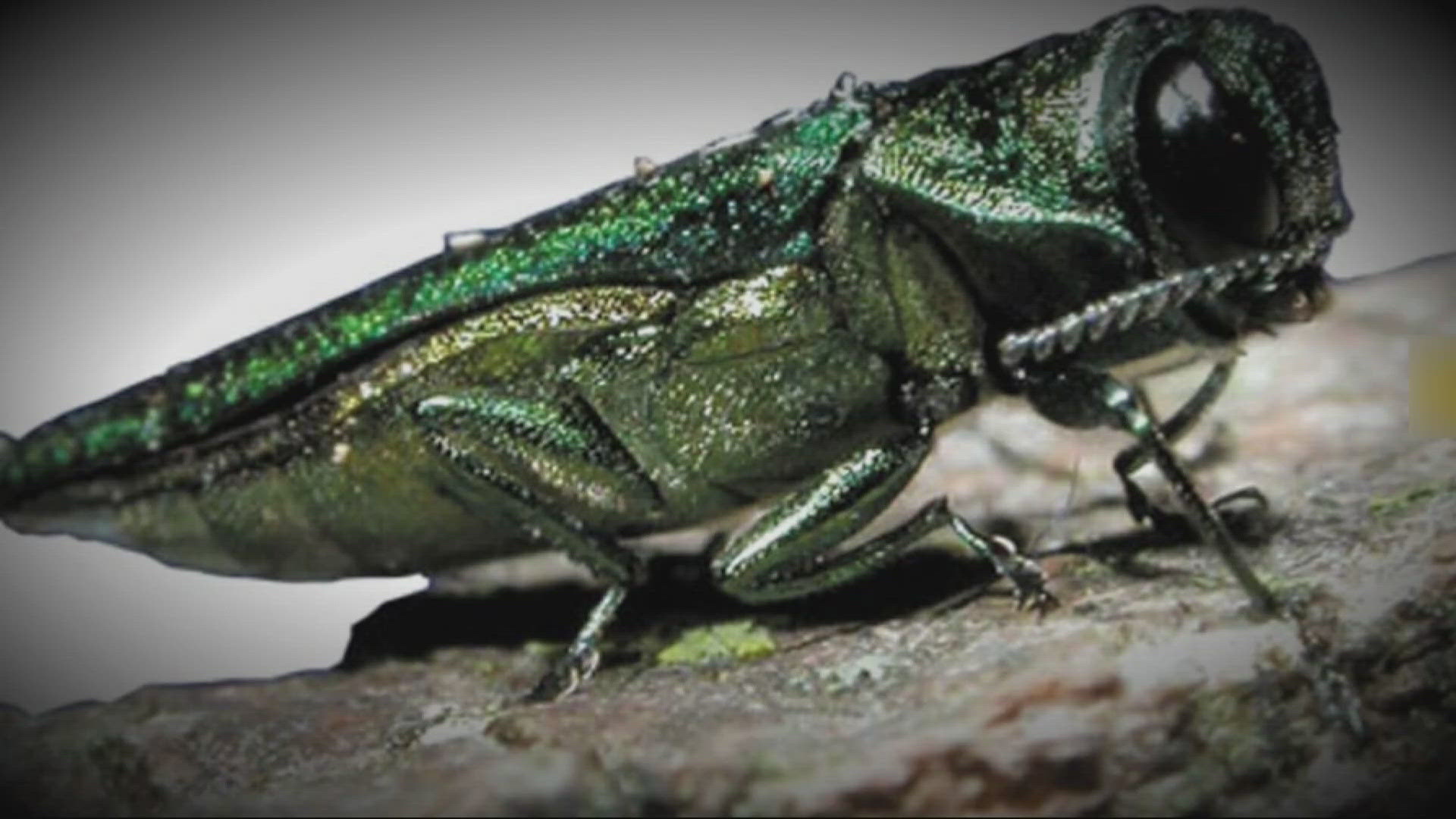PORTLAND, Ore. —
The emerald ash borer, an invasive beetle that’s already killed millions of trees across the country, is spreading in Oregon.
The beetle was first detected in Washington County, near Forest Grove, in 2022. Officials hoped that a quarantine would keep the pest from spreading.
But now, the ash borer, or signs of its infestation, have shown up in Yamhill, Marion and Clackamas counties, according to the Oregon Department of Forestry.
“It's killed probably hundreds of millions of ash trees on the East Coast at this point,” said Matt Mills, an emerald ash borer specialist with the Oregon Department of Forestry. "Other than treating the tree, nothing's been able to stop it.”
An adult beetle was found in a trap near the town of Gaston, roughly 7 miles from Forest Grove, earlier this summer.
In Clackamas County, a utility worker noticed canopy decline in several ash trees in the Elliot Prairie area east of Woodburn. Wyatt Williams, an invasive species specialist with the Department of Forestry, found evidence that the beetles had been feeding on ash trees in the area.
Williams also saw symptoms of emerald ash borer infestation in several trees along Butte Creek, which forms the border between Clackamas and Marion counties. The tree’s canopies appeared to be dying back, and Williams found “D-shaped” exit holes where adult beetles tunneled out of the trunk.
“The extent of dieback suggests that (emerald ash borer) may have been present for a number of years at the site but went unnoticed given the difficult access and dense vegetation, which includes a mix of oak and conifers,” Williams said in a statement.
Multiple adult beetles were in traps in Marion County along the Pudding River, south of Woodburn in late July, officials said.
Ash borer larvae feed on the tree’s cambium, the layer just below the bark, which acts like a circulatory system, transporting water and nutrients up and down the trunk.
“When enough of those beetles get in the tree, it's unable to transport water anymore and the tree dies,” Mills said.
And ash trees play a crucial role in Oregon, Mills said, especially in areas along the banks of creeks and rivers, and in wetlands.
“It fills a niche that not many other trees can copy,” he said. “By losing these ash trees, it's going to be pretty hard on the state of Oregon.”
Death rates for trees infested by the beetle can be as high as 99%, and the options for treatment are limited.
There are some effective pesticides, which can be administered through the soil or injected directly into the tree.
Mills said that type of intervention can be effective for individual trees, but it’s not a viable solution on a landscape scale.
“As far as a large quantity of trees, it's not feasible,” he said, noting that treatments must be repeated over time. “It's too expensive and too time consuming.”
The spread of the ash borer is nearly impossible to stop, too, Mills said.
“We will find it in other locations,” he said. “It's just a matter of when and how we respond and how well communities are prepared to respond to that themselves.”
So, with a pest that’s so deadly to trees, and is so hard to stop from spreading, does that mean ash trees as a species are at risk in Oregon?
“It is a pretty dire prediction, but without any interaction or intervention, we would lose all of our ash trees,” Mills said.
But that doesn’t mean residents are powerless.
After the beetles were discovered in Forest Grove, the state instituted a quarantine, prohibiting the transport of firewood and other woody materials. Those same prohibitions are now in effect in the new counties where the pests have been detected.
And Mills said that folks can learn how to identify ash trees and the symptoms of infestation. If they see a tree they suspect might be harboring emerald ash borers, they can report them to the state online at the state’s invasive species website or by calling 1-866-INVADER.


Other than that, Mills said the best thing that cities and property owners can do is to prepare for the ash borer’s arrival.
“It's not a matter of if, it's when,” he said. “The more you can prepare now and be ready for it, the better you're able to respond.”

